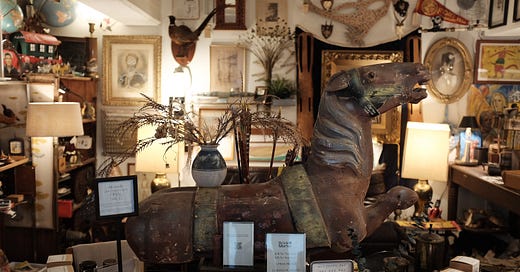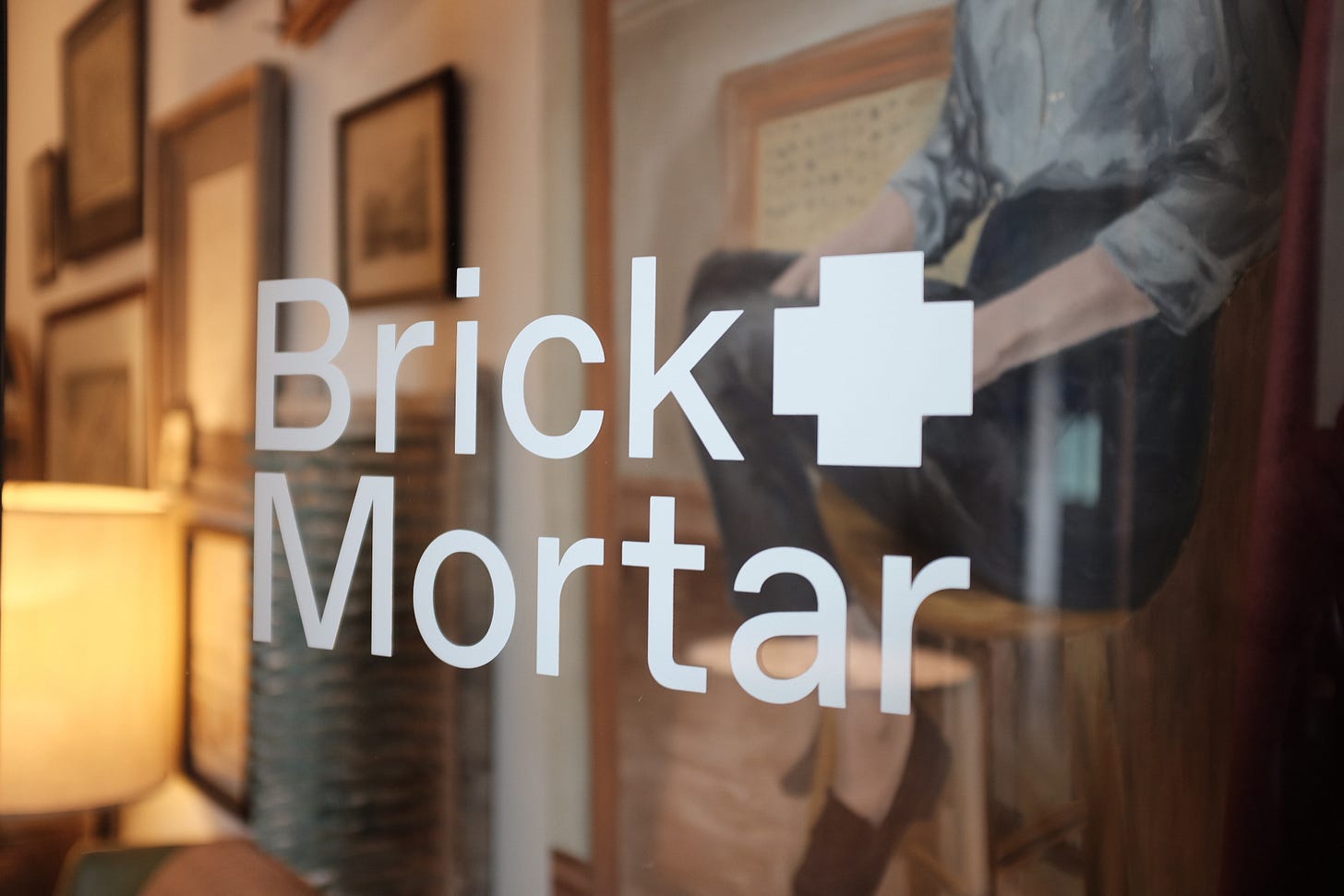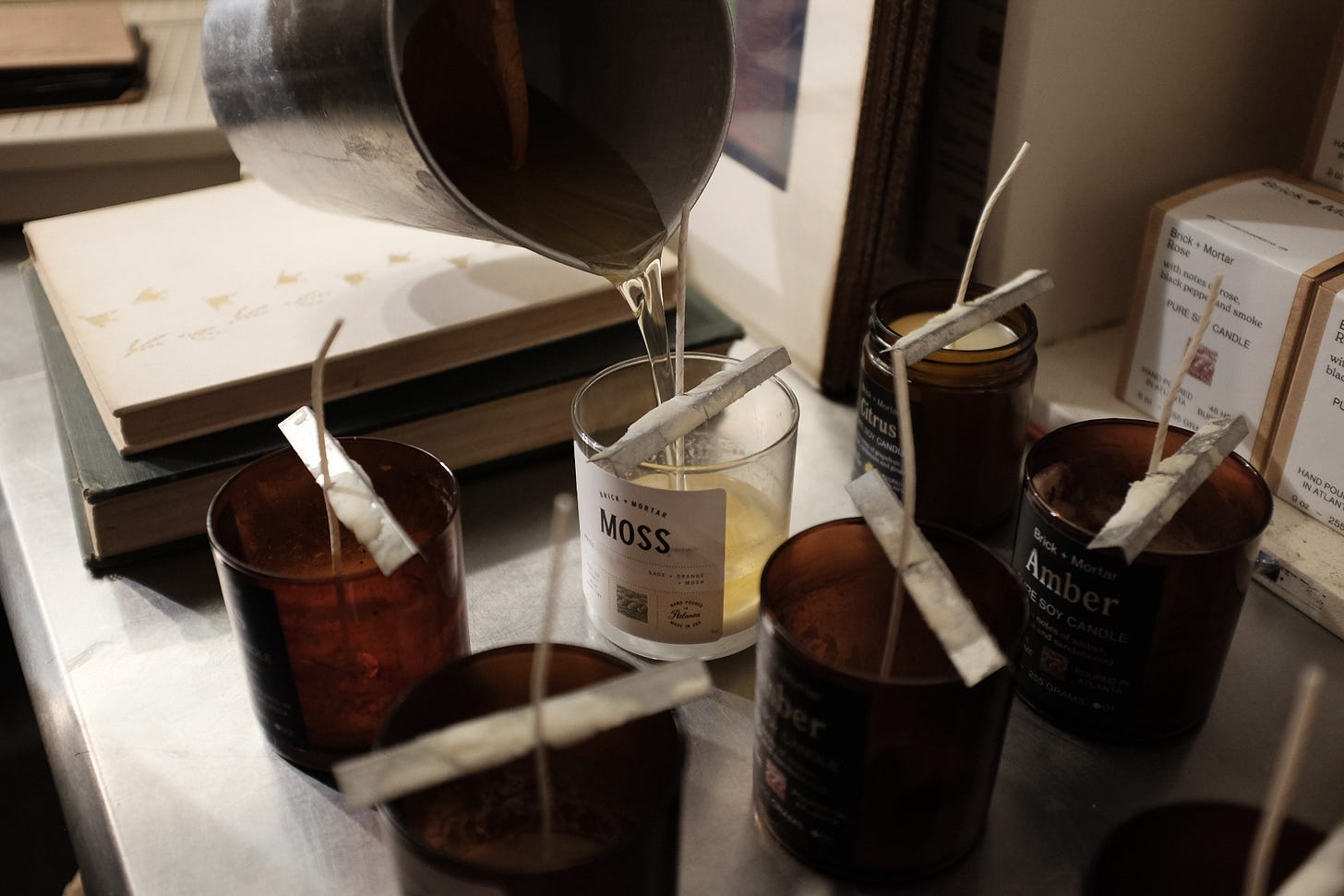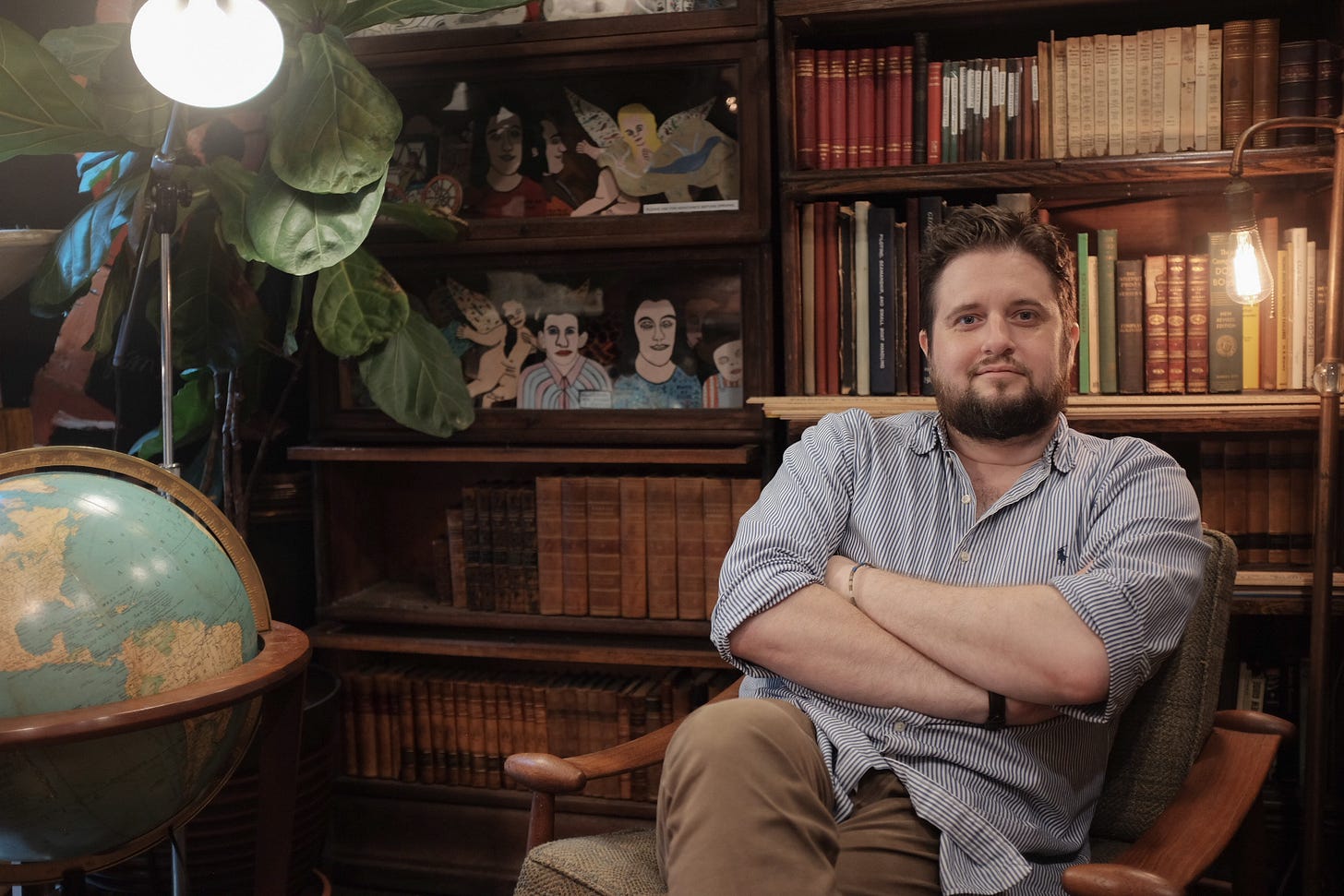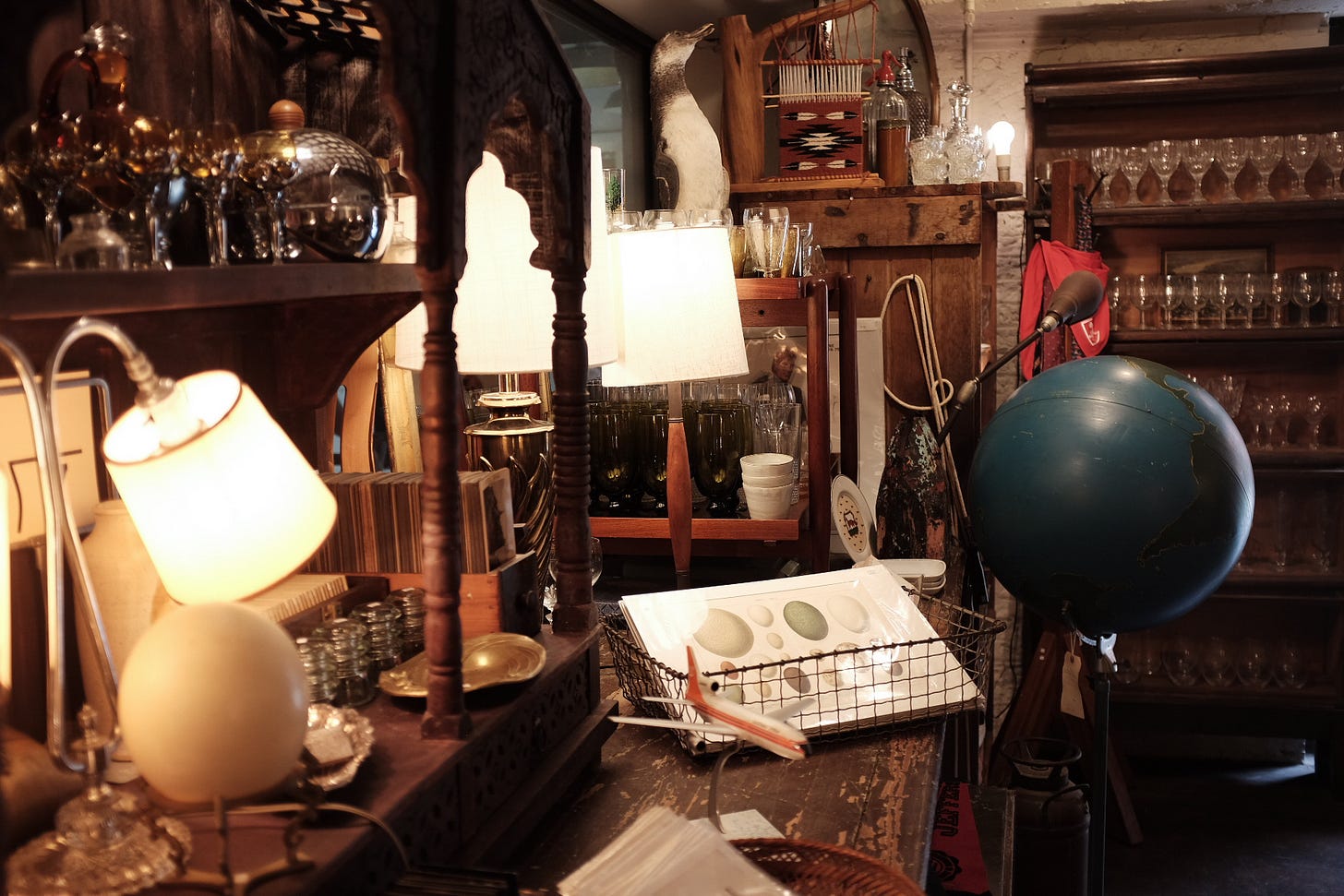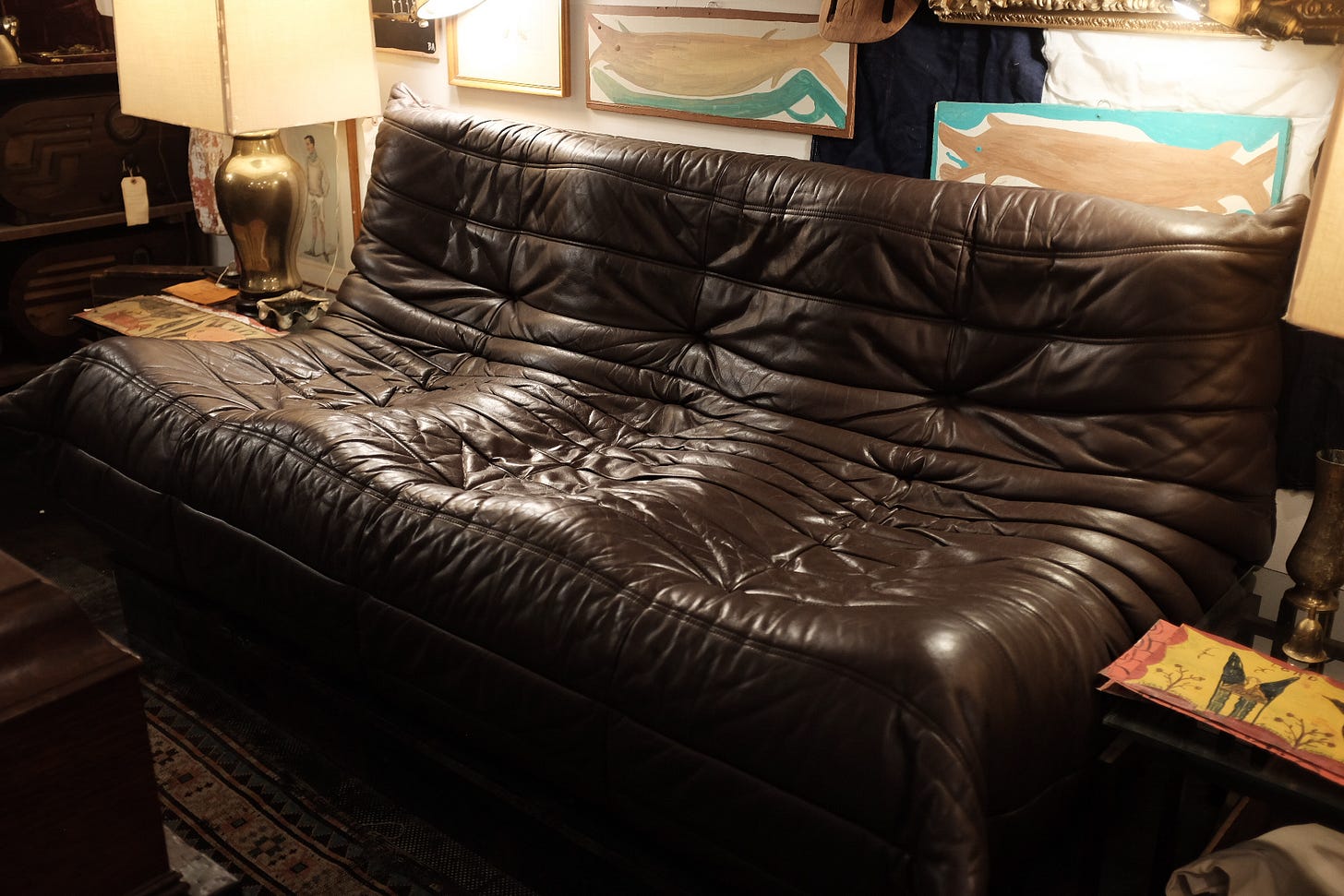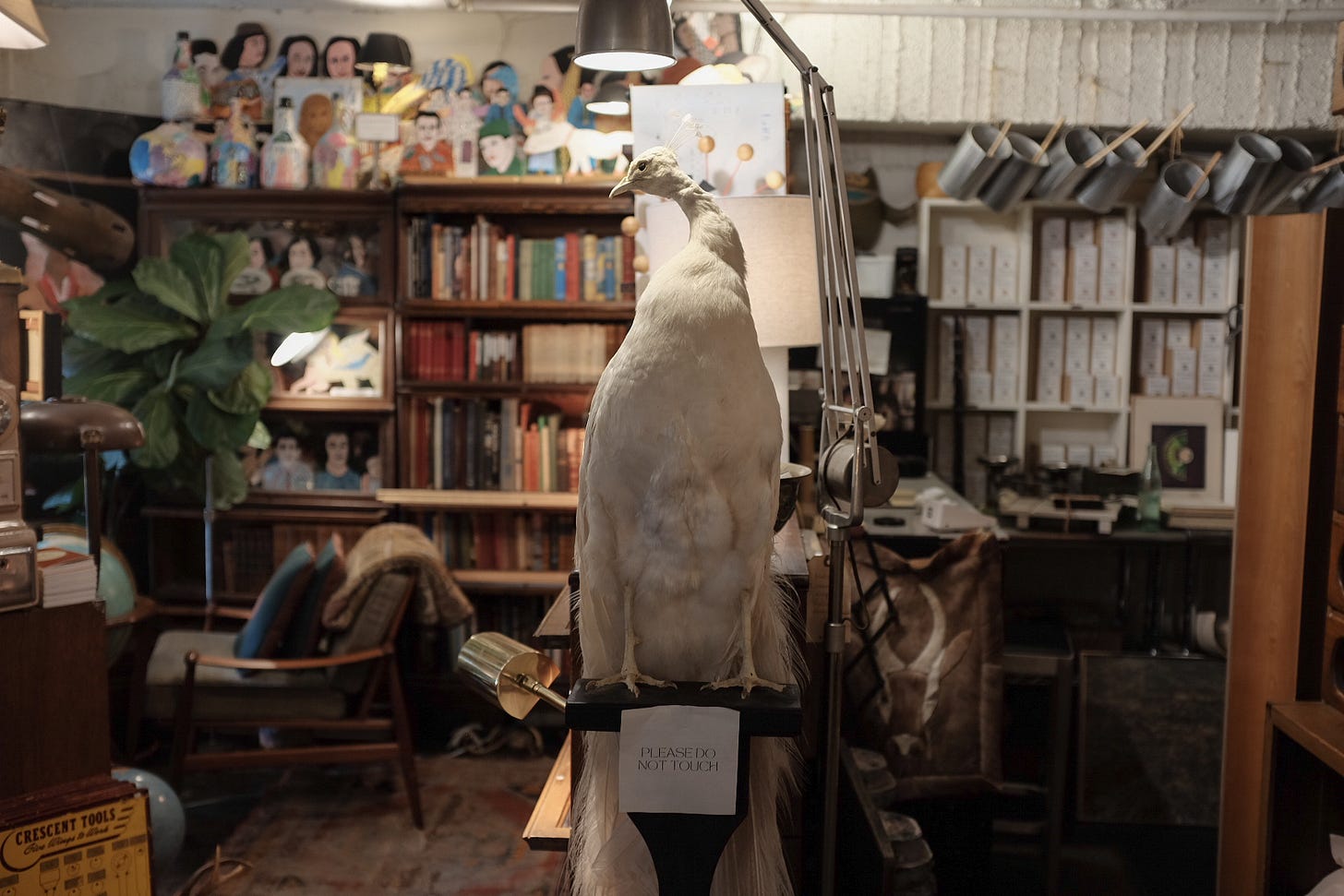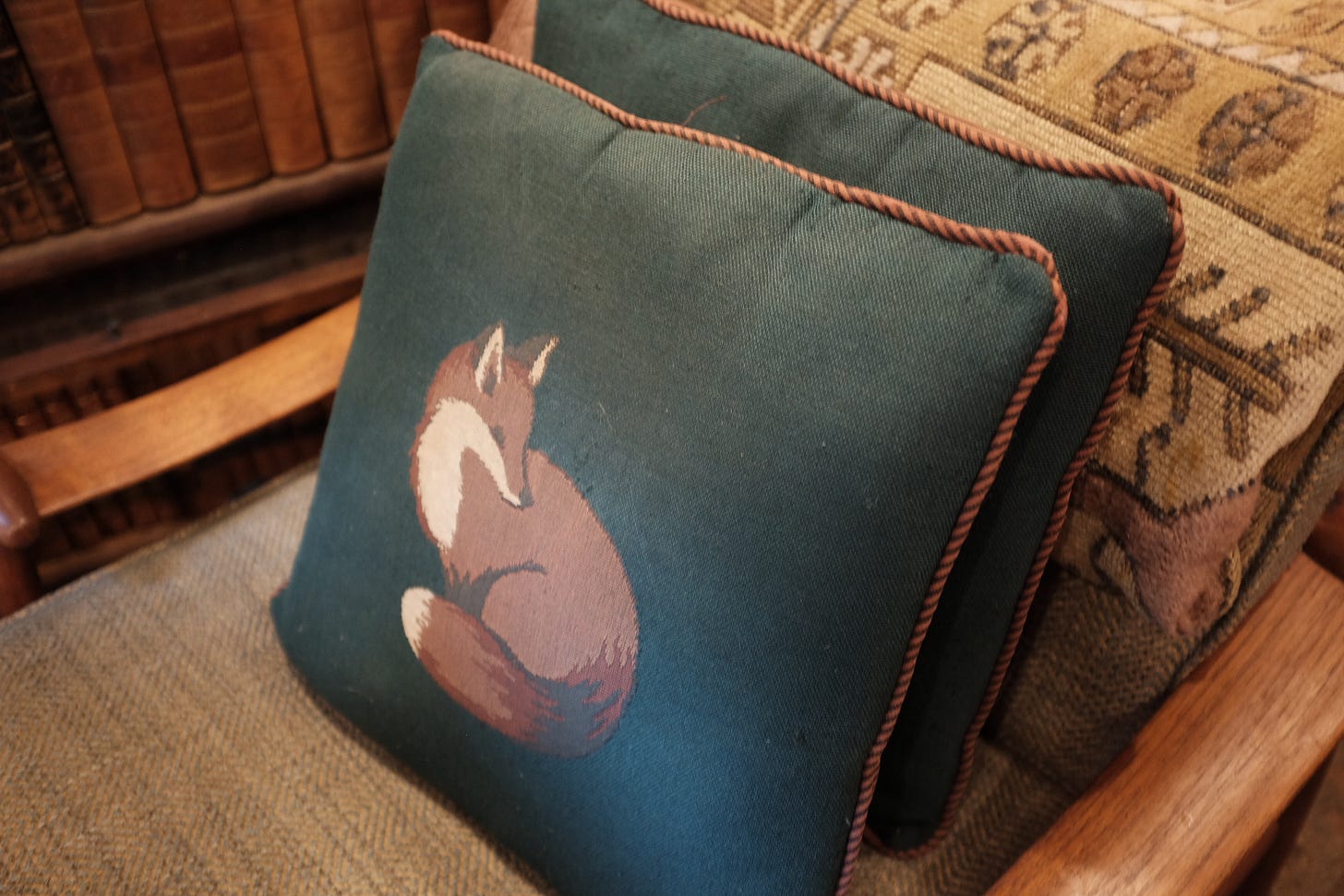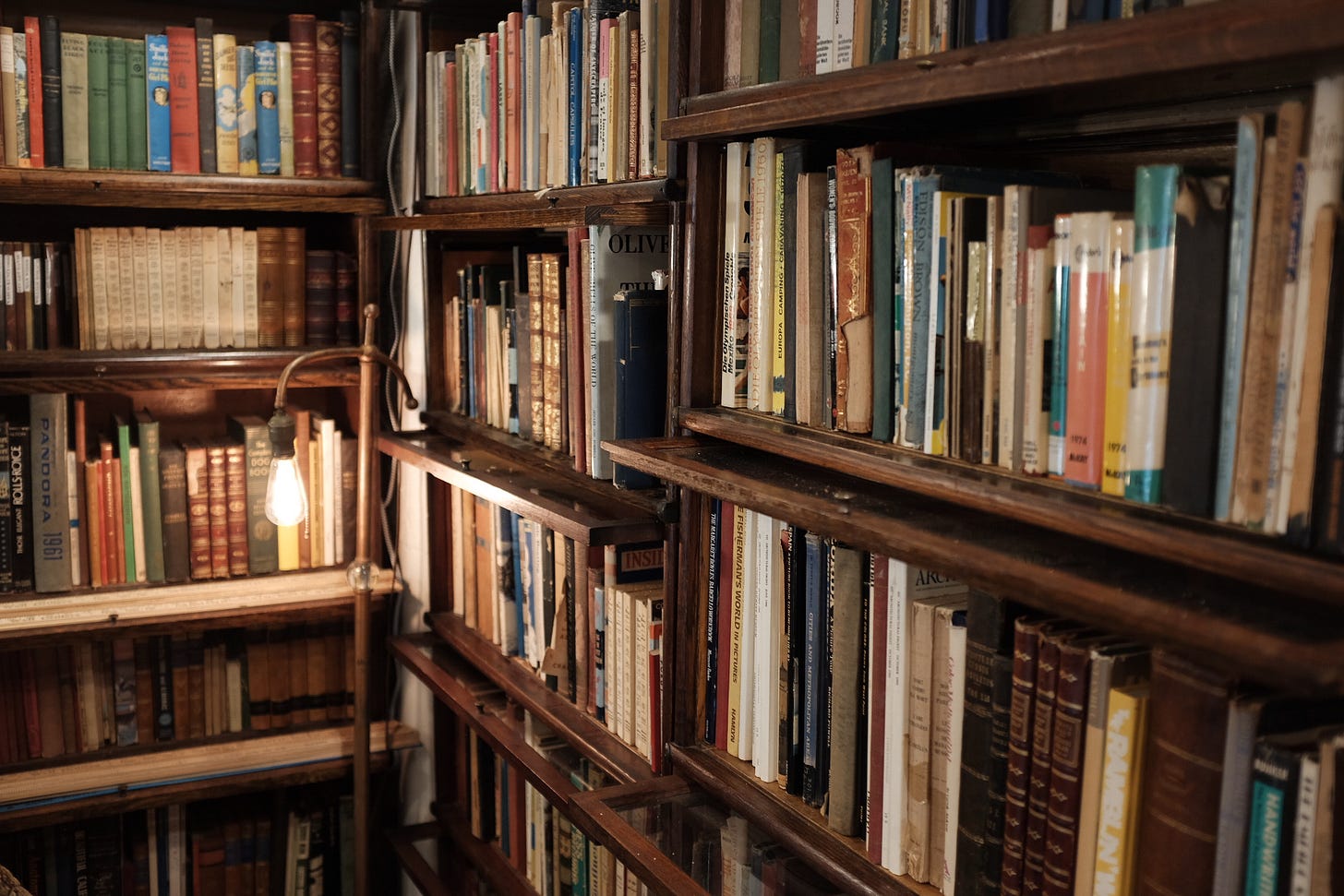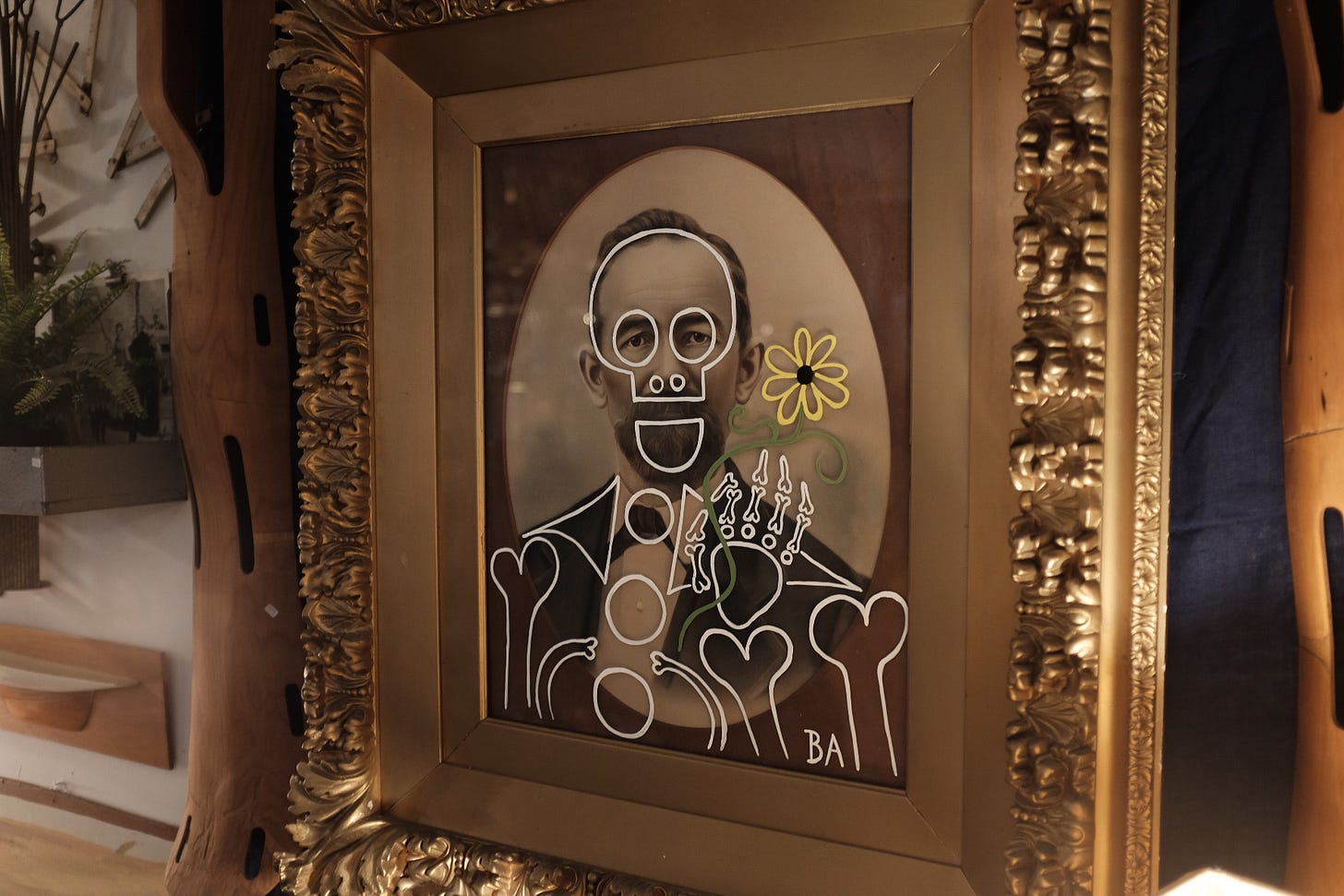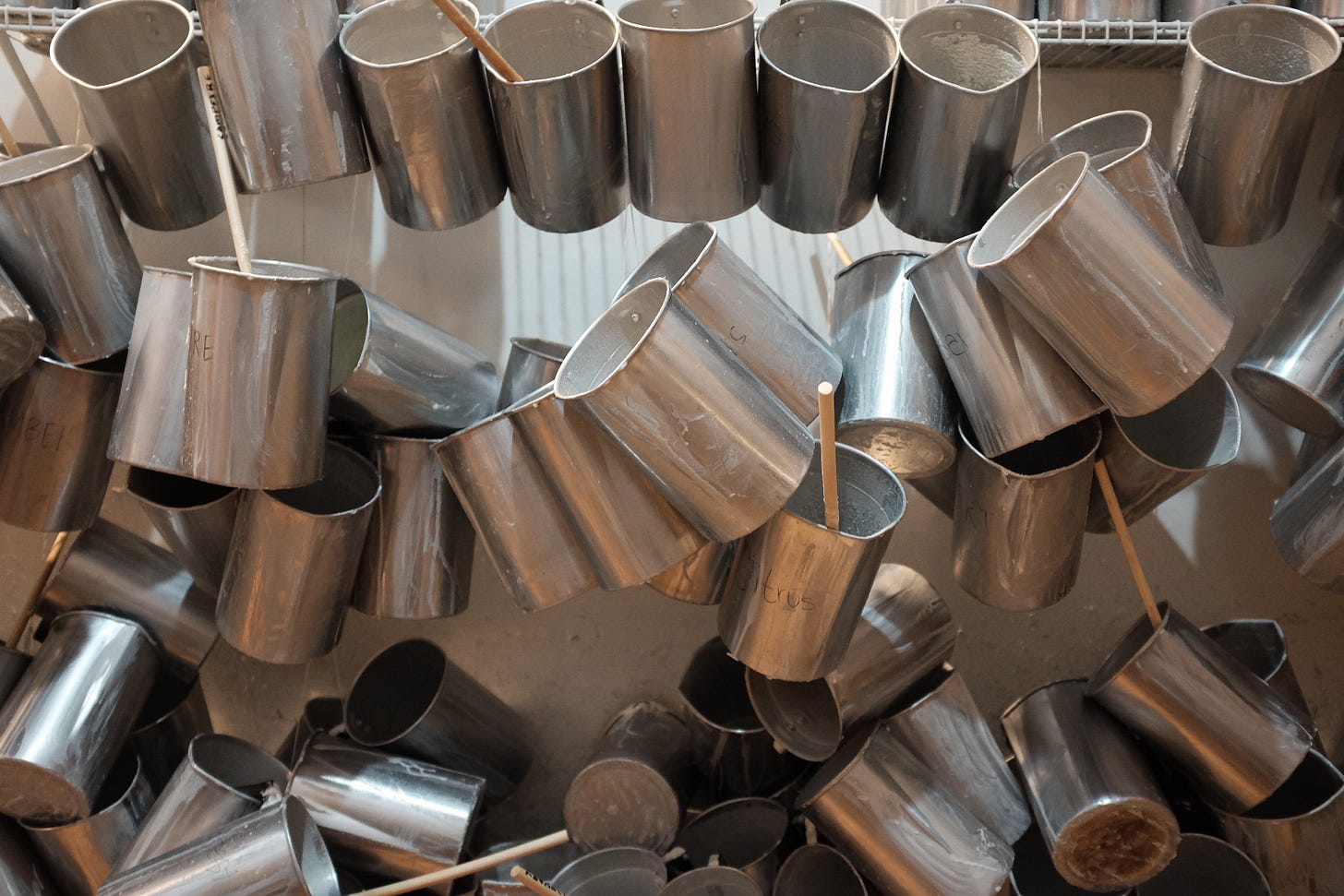There’s a magical place within most homes that is only understood to those who live there. That place, is the junk drawer. An assortment of items that to the unfamiliar, seems like a mess, but to the one it belongs to, is perfectly organized. Each item that exists there has a purpose, a place, and a story. This same experience of feeling often happens even across the rest of our homes. We fill our living spaces with stunning or sometimes odd portraits of ourselves. A space can express the character of an individual, and even though that space may sometimes be hard to be understood by others, if you stop and look around long enough, and ask the right questions, it reveals the heart of the individual who put it all together. There’s a shop in Atlanta called Brick+Mortar that offers both candles and curiosities, and each item here comes with a long list of stories. It’s not your average antiquities market, but is curated by David Kowalski to offer up unique items such as one of a kind vintage books, Eames leg splints, Howard Finster art, and even peacocks. So if you drop by, you might find something that you would have never expected.
The Place: Brick+Mortar
What is the story of Brick+Mortar?
I had lived in China, worked for an international school system, and got laid off from that job. I started buying and selling antiques at this place called Paris On Ponce, that was sort of just like part time. Then I started selling with One Kings Lane which is when I went full time with it, then I moved into Kudzu. 10 or 11 years ago, I moved into westside provisions and that’s when I started the store part. Originally it was just a rotating pop up idea, I would outfit the store and bring in different brands to pop up every few months or so, and did that for 5-6 years until I did my own thing.
How do you curate the items you offer?
First of all, it’s usually from estate sales or auctions. That’s where probably about 95% of my stuff comes from. But if I’m looking at an item at an estate sell, what goes through my head is first of all “would I put it in my home” that’s the number one priority, and then second you have to think about its salability, but now that candles are such a large part of the shop, I have a little more freedom with salability where I can just think about number one, where it’s “do I like this?” Before when I had to rely more on vintage sales, it was more 50/50, and now it’s more important that I like it. I think that when people come into the shop, they want to see something that’s cohesive and well designed and I think if I stick to what I like, I achieve that easier than if I’m thinking about salability because that’s all about trends. Like right now, post modern is really hot, and I'm not a huge fan. It’s more about what I think would be in my house.
Why did you start offering candles?
I kind of always had candles burning in the shop. I think a good retail experience engages all of your senses, so for me when I go into a shop, it looks good, it sounds good, and smells good, like all of these things engaged at once create an almost immersive shopping experience. So before I was making them, I was always burning them because I wanted the shop to smell good. But then, I figured I could make them just as easy as I was buying them. So I taught myself how to make them kind of through YouTube and kind of through some friends that were making candles. Then I got a couple of wholesale accounts, Crate & Barrel was my first big big order, and then more wholesale came through after them.
What’s your involvement with the City of Refuge?
We’ve been here since 2021. Why we’re here, is that I had worked in homelessness for about 15 years before I came here. In that time, I was able to see that homelessness is a complex issues. There are a lot of factors that get you into homelessness and a lot of factors that get you out and it’s not like a one size fits all, but there are a few pieces of that puzzle that are consistent across the board. One of those, is having a job. Having a job creates a safety net, it creates a purpose, it creates dignity. It creates all these good things in a person’s life that can move them towards self sufficiency. So I really saw how that affected people and my dream always was to scale a product to provide jobs to homeless. So when candles started to be really successful, I started reaching out to other organizations and I always respected City of Refuge, what they do, and they’re sort of progressive in their approach towards homelessness. It’s not just throwing money, food, or clothing at a person and hoping for the best. They sort of know how to set a person up for success. They’re very thoughtful about helping people help themselves and that idea to me was really appealing. If you can help them get back on their feet and understand how to provide for themselves and their family, you have a higher success rate. We approached City of Refuge with this idea and they were probably on board within 2 months. They had set up everything for us, and we started working with the women at House Of Cherith, who are either coming out of domestic abuse or sex trafficking. These are women that go through the program, have a safe house, and once they’re ready to have a job, they send them to us. For us, we bring them in and create an environment that’s safe and supportive for them and also teaches them skills on how to show up on time, open a bank account, create a resumé and do these things that they’ve never been able to learn due to their circumstances, then once they graduate, they can eventually move out and hopefully be set up for success.
The Person: David Kowalski
What is your story?
So I grew up in Hickory flat, went to Berry College, studied business. I moved to China right after graduation and my professional career makes no sense at all. So I was teaching at a university in China and then I moved back and worked for a business author named Marcus Buckingham, then I worked at Turner broadcasting, then worked for an international school system that was in China and was working in HR hiring teachers to go over to China and then I very unexpectedly got laid off from that job, where then I started buying and selling vintage antique stuff. Basically the company is based around the ethos of “place” which kind of ties into the name Brick+Mortar which is basically like a physical place and I’ve always been honed in on what makes place special. So within all of that, there’s this idea of “place” that kind of permeates most of what I do. Within all that, I also do design work. I mostly do commercial design, restaurants, offices, and that sort of stuff.
What do you like most about design?
I think that, whether its interior or fashion, it’s a very tangible way to express who you are as a person. So I think that’s why I love to design so much. Because it’s a fairly simple straight forward way of expressing who you are as a person, if you’re doing it authentically.
What’re some of your most memorable projects?
I like all of the stuff that I’ve done with Third and Urban because they really give me free rein. I also like Lady Bird. It represented a lot of who I was at the time, and my taste has certainly evolved since then, but it was a good snapshot and was my very first design project. I’d say my cabin too, though there’s a lot of work that needs to be done, cause I had no one telling me how to do it, and it’s authentically me. I’m not formally trained, but I had enough experience to examine the space and know what to put in it.
What do you feel like is under appreciated in your field of work?
I mean generally speaking, details are under appreciated. That’s what makes good design. One of my favorite designers is Elizabeth Ingram, she’s a master at layering and really looking at all of the small details of the space. Often times that can be very under appreciated. I’ve always said that good design is thoughtful, so it represents the thought process of that person. So it’s not just about putting a room together, and when you get down to it, it’s about the small details like what kind of lightbulbs you use, spacing between frames, the size of a rug, and all those little things. People don’t notice right away, but if you’re in a thoughtful space, I think you can feel it, I hope, like what Elizabeth did with Marcel and when you walk in there, you understand there was a lot of thought that went into it. I also feel like nowadays in design there is an equivalent of fast fashion. Like buying stuff at target that’s gonna break in two years. We’re in a weird place where you can spend $800 on a lamp that’s gonna last you the rest of your life or $30 on a lamp at target that’ll last you for two years. It’s hard to do the math on that and still choose the $800 lamp, because at the end of the day, the cheaper lamp goes out and you just buy another one, and another one, but you’re creating so much waste in that cycle which is something to consider. We’re in a day and age where you just google image a chair or something, and you just find a knockoff and end up with poorly made things. So I think buying authentic is very under appreciated right now.
How do you like to spend your down time?
Biking, traveling, reading and I go to my cabin. I feel like the pandemic really screwed up my social life, so I do a lot of things solo now. Like for downtime I’ll do one of those things. However I did recently start a knitting class. It’s a class to make a hat, but I don’t think that’s gonna be a lifelong hobby of mine. So yeah, I think the more stress my life has in it, the more I try and do things that are calming, soothing, and create safety. I try to travel as much as I can. I still honestly really enjoy what I do, like going to estate sales and auctions. I’ll even watch auctions for fun, because there’s something about that hunt that I really really love.
What’s one of the strangest things that you’ve found at an estate sale?
I feel like at this point in my life, there’s really nothing that strange anymore. I’ve found everything from zebra heads to war propaganda kind of stuff which is weird. I think by this time, I’ve been to thousands of estate sales. There’s been a couple times when I’ve bought things that belonged to a customer or a family member of a customer and that’s always very interesting. Like I found a trunk once that was this man’s grandfathers. It still had the sticker on the inside with who it belonged to. That kind of small world thing is really unusual and interesting to me. It’s always fun to have a yearbook that people can find a friend or family member in. I just get really stoked when people can connect to a piece on a personal level.
Do you have a dream design project?
Well my dream would be no input and no budget, but that’s not likely going to happen. I am very interested in trauma informed design. I don’t know if I’ll ever be able to do it, but at Atlanta mission, they hired a person to do interiors and they were a trauma informed designer which means they think about the trauma people have been through which is usually within hospitals, shelters, or places you’re taking care of people. It just incorporates thought on lighting, where the seats are facing, where people don’t like their back to a door, so they can see who’s coming in. To me that kind of design is really interesting, because at its core, it’s like really about the user experience. So I think that might be fun, but I’m not actively looking for design projects, I just do what comes to me.
How would you describe your personal style?
I don’t know, I’m sort of getting to the core of what that means, I don’t think I’m there yet. I would have to say, I lean more towards a blend of Scandinavian mixed with Americana mixed with mid century. It’s hard to say. I do like things with a lot of patina on it, an Eames lounge chair, and I like a sparse space and I like cluttered, but definitely more towards like the clean neutral aspect of Scandinavian but also the rustic story driven Americana kind of vibe. The more I learn about furniture, the more I appreciate mid century, though I didn’t always appreciate it. It was sort of an era of figuring out materials and ergonomics. So when you look at a piece of well designed mid century furniture its mostly about the user experience, which good design is always thinking about.
Recommendations: Estate Sales, Designing a Space, & Travel
Tips for estate sales?
Estatesales.net, They got a great app. Look at all the pictures. Don’t go to all of them. Learn the companies. Learn the pricing. Become friends with them, because at the end of the day, they’re the ones pricing and negotiating. I rarely go to the ones that won’t negotiate. You sort of have to learn the pricing structure for the different companies. So walking into it, know what you want, know how much you should be paying for it, be respectful to the people working there and don’t just assume they’ve priced something wrong.
What is something everyone should have in their home?
I think it’s important to put your money into high touch items. Pieces that you are opening and closing everyday. Cabinets, chest of drawers, a desk, a couch, or coffee table maybe. In those things I would suggest putting more time, attention and money into. If you go cheap on stuff like that, they’ll break and so in a project I’m not gonna dump a ton of money into say lighting. I do love good quality lighting, but if you’re on a budget, that’s a place you can go some place more affordable. As for building a room, for me, I can’t stand an empty wall. I’m not very minimalistic and I think art on a wall is one of the best ways to represent who you are. Art especially sets a standard or mood for a room, and I think everything else can sort of be malleable around that. I think what’s on the wall really dictates the vibe of the room.
What’s a destination everyone should travel to?
I think literally any where outside of the country. I think we’ve become so insular as Americans that we don’t realize there’s a whole world outside of here. Scandinavia is always at the top of my list. They just have a different way of approaching life, where work isn’t the most important thing. Having a meaningful life is more important than a successful career or at least that’s what I’ve experienced there. Kind of the same answer for Paris. They seem to have a greater appreciation for experience and life. They understand the value in a good cup of coffee or good meal or good art. They just really know how to slow down life and appreciate the good parts. In America we can sometimes get stuck in a routine, such as put our head down and do our job and just not enjoy life. I think those two places, I have found, enjoy life more than any place I’ve been. So I think that’s a good place to start.
Now through the end of August, you can get 25% off candles with code “iknowaplace”
